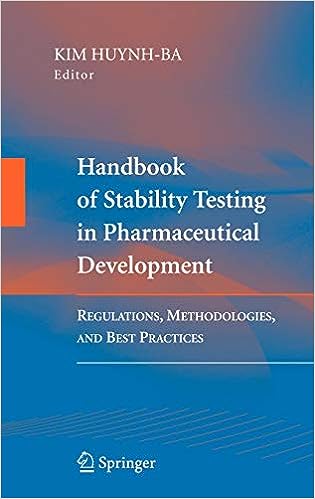Procedures to Comply with US FDA Stability Testing Requirements
1) Purpose
The purpose of this Standard Operating Procedure (SOP) is to provide a detailed procedure for conducting stability testing of drug substances and drug products in compliance with the United States Food and Drug Administration (US FDA) requirements. This SOP ensures that the stability data generated is adequate to demonstrate the product’s quality, safety, and efficacy throughout its shelf life under the intended storage conditions.
2) Scope
This SOP applies to all personnel involved in the design, execution, and documentation of stability studies for drug
3) Responsibilities
Stability Testing Team: Responsible for conducting stability tests, collecting data,
and documenting results in compliance with US FDA requirements.Quality Assurance (QA) Team: Responsible for reviewing and approving stability protocols, reports, and ensuring compliance with regulatory requirements.
Regulatory Affairs Team: Responsible for interpreting US FDA guidelines and ensuring that the study design and results meet the regulatory expectations of the US market.
4) Procedure
4.1 Preparation for Stability Testing
4.1.1 Obtain and review the latest version of the US FDA guidelines for stability testing, including relevant sections of the Code of Federal Regulations (CFR) Title 21.
4.1.2 Identify the drug substance or product to be tested and determine the type of stability study required (e.g., long-term, accelerated, or intermediate).
4.1.3 Develop a stability protocol that includes study design, testing schedule, storage conditions, and testing parameters as per US FDA requirements.
4.2 Selection of Batches and Samples
4.2.1 Select representative batches of the drug substance or product, preferably three primary batches manufactured using the proposed production process.
4.2.2 Ensure that the selected batches are representative of the product intended for the US market and cover the range of production variations.
4.2.3 Prepare sufficient samples to cover the entire study duration, considering the number of time points and tests to be conducted.
4.3 Defining Storage Conditions and Time Points
4.3.1 Define the storage conditions as per US FDA guidelines, typically including:
- Long-term stability: 25°C ± 2°C/60% RH ± 5% RH
- Accelerated stability: 40°C ± 2°C/75% RH ± 5% RH
- Intermediate stability (if needed): 30°C ± 2°C/65% RH ± 5% RH
4.3.2 Establish the time points for sampling, such as 0, 3, 6, 9, 12, 18, and 24 months for long-term studies, and additional time points for accelerated or intermediate studies.
4.4 Conducting the Stability Tests
4.4.1 Store samples under the defined conditions, monitoring temperature and humidity to ensure compliance with the set parameters.
4.4.2 At each specified time point, remove samples and conduct stability-indicating tests, including physical, chemical, microbiological, and functional tests, as applicable.
4.4.3 Record all results meticulously in stability data sheets, ensuring accuracy and traceability of data.
4.5 Data Analysis and Documentation
4.5.1 Review the stability data to identify any trends, deviations, or out-of-specification (OOS) results.
4.5.2 Investigate any OOS results, document findings, and implement corrective actions as necessary.
4.5.3 Compile a stability report that includes a summary of the study design, results, conclusions, and recommended shelf life and storage conditions for the US market.
4.6 Quality Assurance Review and Approval
4.6.1 Submit the stability report and all associated data to the QA Team for review.
4.6.2 QA Team to verify the completeness, accuracy, and compliance of the stability study with US FDA guidelines.
4.6.3 Address any discrepancies or required changes identified by the QA Team and finalize the report for approval.
4.7 Submission to the US FDA
4.7.1 Prepare the stability data package in the format required by the US FDA, typically using the electronic Common Technical Document (eCTD) format.
4.7.2 Submit the stability data package electronically through the US FDA’s Electronic Submissions Gateway (ESG).
4.7.3 Retain a copy of the submitted data package and maintain all relevant records in accordance with Good Documentation Practices (GDP).
5) Abbreviations, if any
US FDA: United States Food and Drug Administration
NDA: New Drug Application
ANDA: Abbreviated New Drug Application
OOS: Out-of-Specification
eCTD: Electronic Common Technical Document
ESG: Electronic Submissions Gateway
GDP: Good Documentation Practices
6) Documents, if any
Stability protocol, stability data sheets, stability testing records, stability report, submission package to the US FDA.
7) Reference, if any
US FDA Guidance for Industry: Stability Testing of Drug Substances and Drug Products (Q1A(R2)), CFR Title 21, ICH Guidelines.
8) SOP Version
Version 1.0
